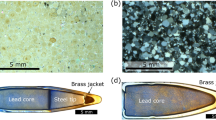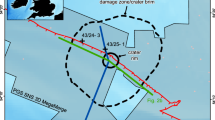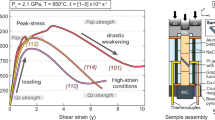Abstract
SERIOUS discrepancies and considerable variations have been observed in the numerous empirical, semi-empirical, and theoretical equations which have been proposed to describe craters formed in metal targets as a result of hyper-velocity impact1. These inconsistencies in the mathematical models can be attributed to a paucity of precise engineering data and to a basic disagreement about the mechanism of impact. One group of experimenters has attempted to relate the extent of hyper-velocity damage to the mechanical properties of the impacted target; another group has stressed the hydrodynamic model of cratering.
This is a preview of subscription content, access via your institution
Access options
Subscribe to this journal
Receive 51 print issues and online access
$199.00 per year
only $3.90 per issue
Buy this article
- Purchase on SpringerLink
- Instant access to full article PDF
Prices may be subject to local taxes which are calculated during checkout
Similar content being viewed by others
References
Hermann, W., and Jones, A. H., “Survey of Hypervelocity Impact Information”, A.S.T.I.A., 267, 289 (September 1961).
Atkins, W. W., and Halperson, S. M. (personal communication).
Piacesi, R. (personal communication).
Nunes, J., and Larson, F. R., Amer. Soc. Testing Mat. Proc., 61, 1349 (1961).
Author information
Authors and Affiliations
Rights and permissions
About this article
Cite this article
ROLSTEN, R. True Stress to Fracture and Hyper-velocity Crater Depth. Nature 207, 1182 (1965). https://doi.org/10.1038/2071182a0
Published:
Issue date:
DOI: https://doi.org/10.1038/2071182a0



